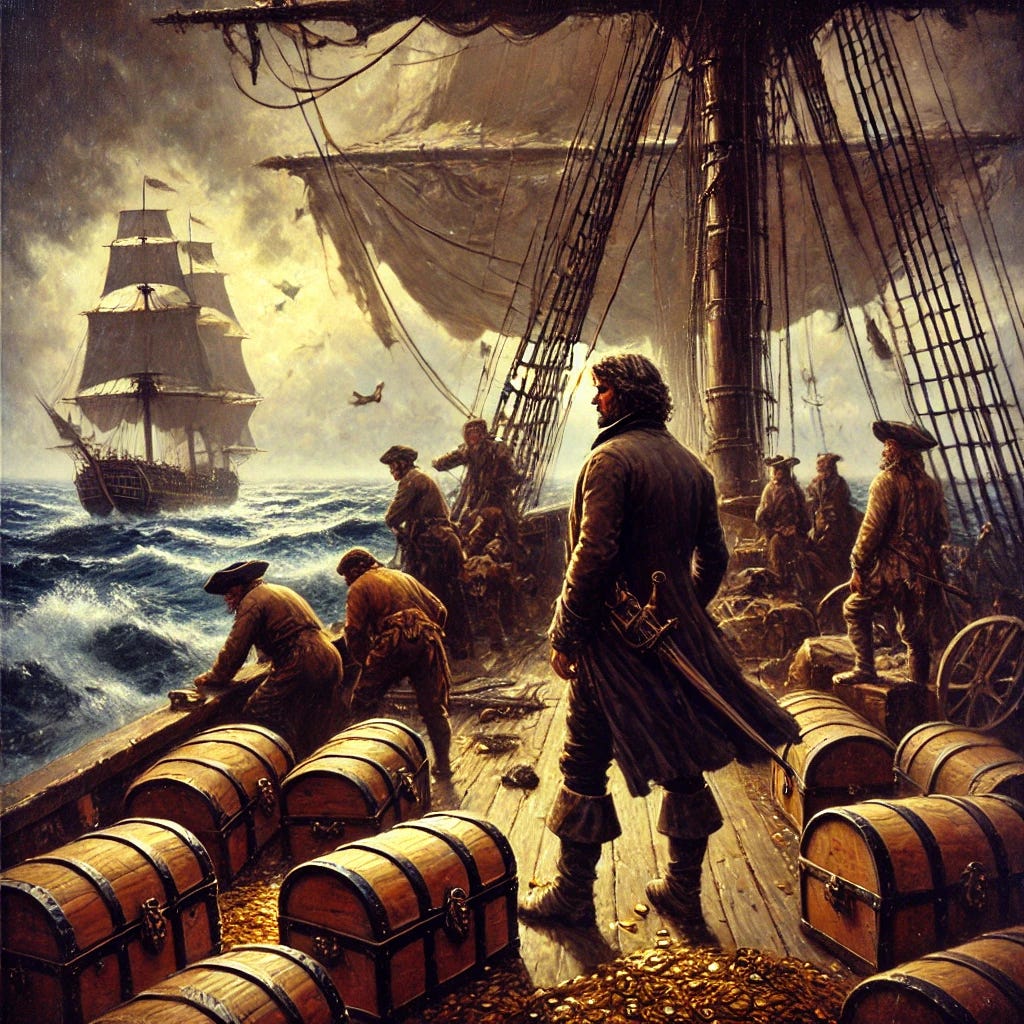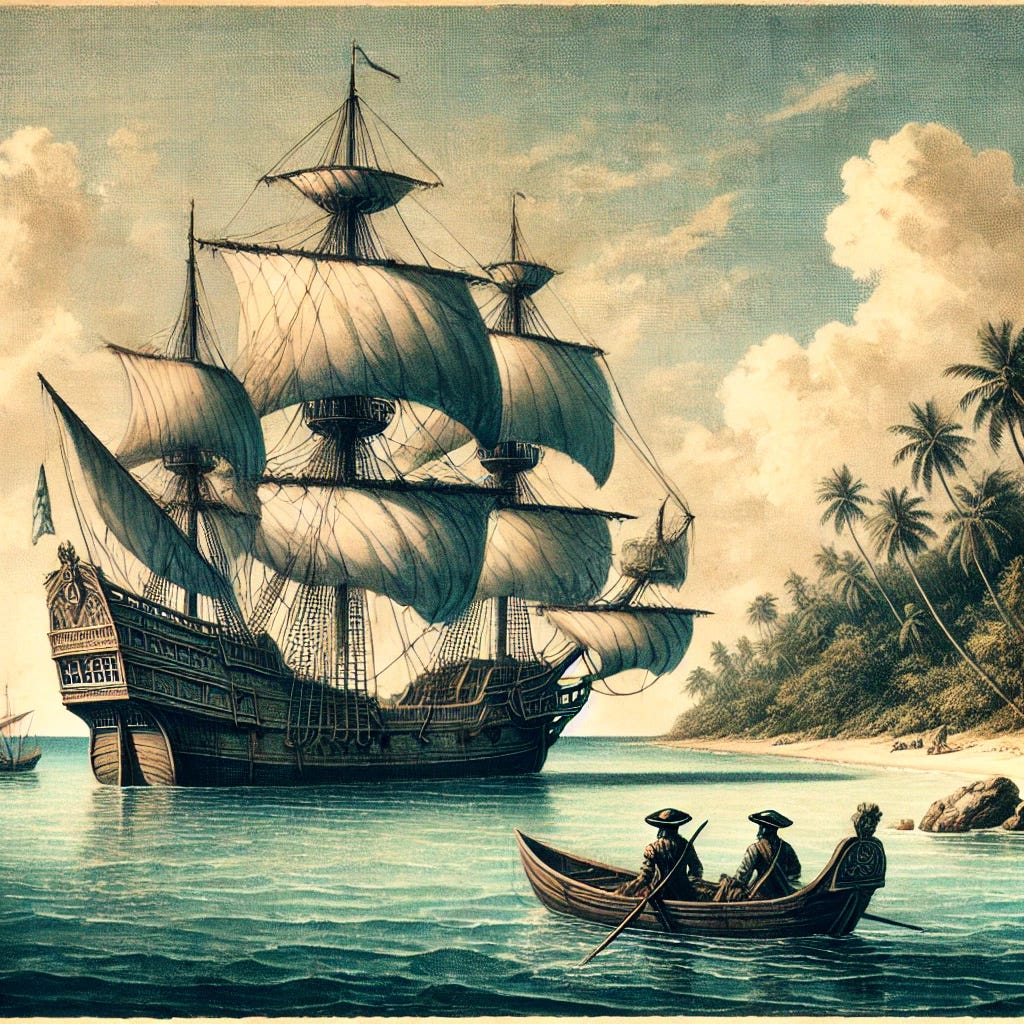Exploring the Threads of History and Fiction
Captain Kidd’s Trial, a Shallow-Water Wreck, and My Fictional Journey
When I began writing The Secret at Mahone Bay while an undergraduate at Cal State LA in the early 1990s, I envisioned a story rooted in intrigue, history, and a search for identity. The novel centers on Sean Allen, a young attorney whose life takes a dramatic turn when he discovers he is a descendant of the infamous pirate Captain William Kidd. As Sean embarks on a quest to uncover the truth behind his family’s mysterious past, he becomes entangled in a web of historical secrets, buried treasure, and personal revelations.
At its heart, The Secret at Mahone Bay is a story about legacy and the hidden threads of history that shape our lives. Sean’s journey traverses continents and centuries, weaving his modern-day quest with historical flashbacks, including a pivotal scene at Captain Kidd’s trial. Among the historical elements that enrich the narrative is the Quedagh Merchant, one of Kidd’s most infamous captures. While the ship is not central to the story, it plays a key role in Sean’s unfolding quest.
What the Secret Is About
Sean Allen’s life takes a dramatic turn when an unscrupulous historian defrauds him of his family’s records. This betrayal spurs Sean to delve into his heritage, revealing a lineage that traces back to Captain Kidd. His investigation leads him to Mahone Bay, a location rich in legend and rumored to conceal Kidd’s treasure.
The novel explores Sean’s efforts to piece together fragments of history—cryptic maps, court documents, and oral traditions passed down through generations. Along the way, he grapples with questions of identity, morality, and the burden of his ancestor’s notorious reputation. His journey forces him to confront external challenges and internal dilemmas about the meaning of legacy and redemption.
While Mahone Bay provides the novel’s mystery and suspense, the story is ultimately one of self-discovery. Sean’s journey reflects the complexities of navigating the blurred lines between history and legend, truth and myth.
The Quedagh Merchant: A Plot Point in a Larger Story
The Quedagh Merchant is a historical element woven into Sean’s story. This 17th-century merchant vessel, laden with riches from the East Indies, was captured by Captain Kidd in 1698. Its controversial seizure caused political fallout with the East India Company and played a key role in Kidd’s eventual downfall and trial.
In the novel, the Quedagh Merchant is introduced in a flashback during Kidd’s trial, which I recreated using actual transcripts and notes. The scene highlights Kidd’s defense as he argued that his actions were sanctioned by his privateering commission. It serves as a window into the political and personal forces shaping Kidd’s story, adding depth to Sean’s investigation of his family’s past.
While the Quedagh Merchant was not initially intended to be a major part of the novel, it became an enriching subplot that added historical authenticity to the story.
A Recent Realization
For years, I regarded the Quedagh Merchant as just another fascinating detail in Kidd’s story. However, after a recent trip to Portugal, I made an unexpected connection. Reflecting on the ship’s name, I realized that the term Quedagh doesn’t have an obvious Armenian origin, as I had once speculated. Its linguistic roots remain unclear, but it prompted me to look deeper into the ship’s history.
I discovered that while Armenian merchants were key players in the ship’s trading operations, it was part of a broader, multicultural maritime network. The ship was not exclusively Armenian but represented a fusion of economic and cultural influences from across the Indian Ocean and beyond.
The Ship as a Historical Touchpoint
In The Secret at Mahone Bay, the Quedagh Merchant acts as a touchpoint connecting the fictional narrative to real historical events. While it is not the story’s centerpiece, its inclusion grounds Sean’s journey in the broader complexities of Kidd’s life and legacy.
The ship’s multicultural history highlights the interconnected nature of 17th-century trade, where Armenian, Indian, European, and Persian influences converged. This realization added a new layer of richness to my understanding of the Quedagh Merchant and its role in the novel.
Reflecting on the Journey
Writing The Secret at Mahone Bay has been a journey of discovery—one that began decades ago and continues to evolve. The novel is not about the Quedagh Merchant, but the ship’s story provides historical texture and depth to Sean’s quest. It reminds me that history is a living narrative, full of hidden connections waiting to be uncovered.
This journey has been about more than storytelling—it’s been about understanding how even the smallest historical details, like the Quedagh Merchant, can illuminate larger, richer narratives.










